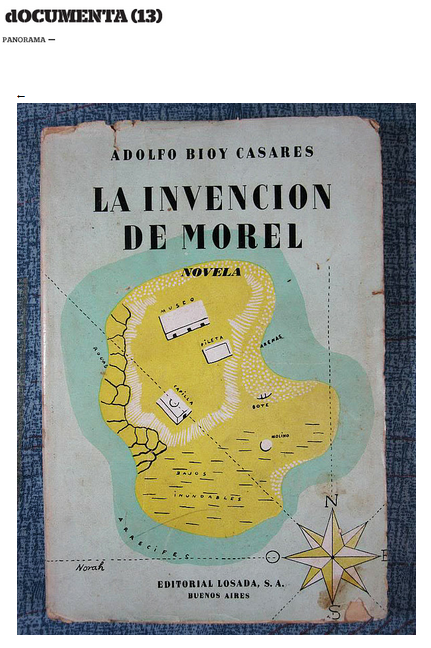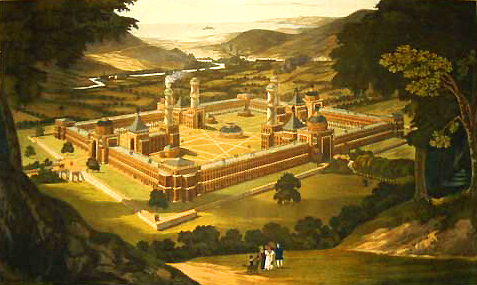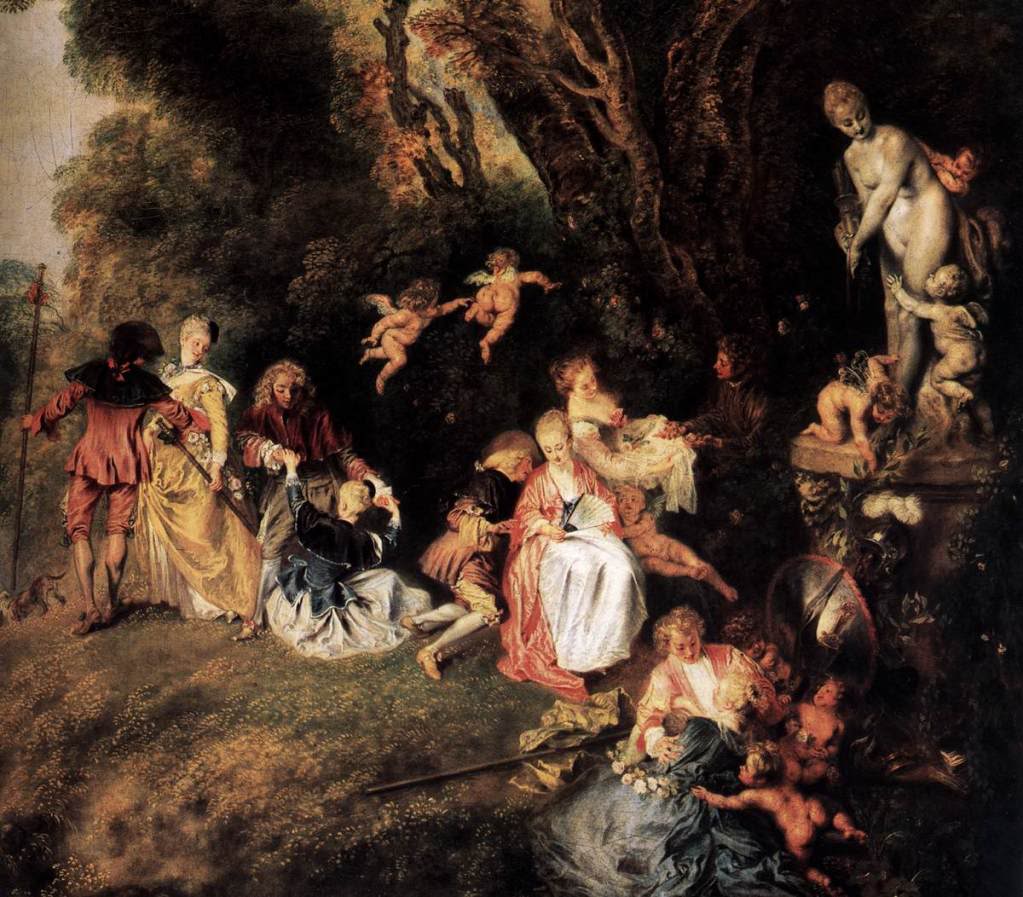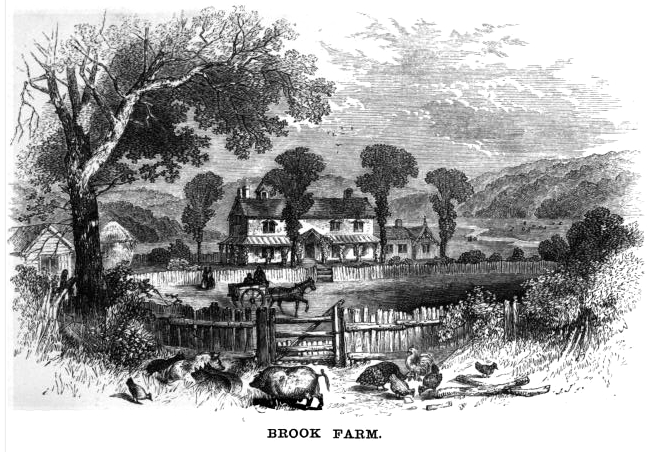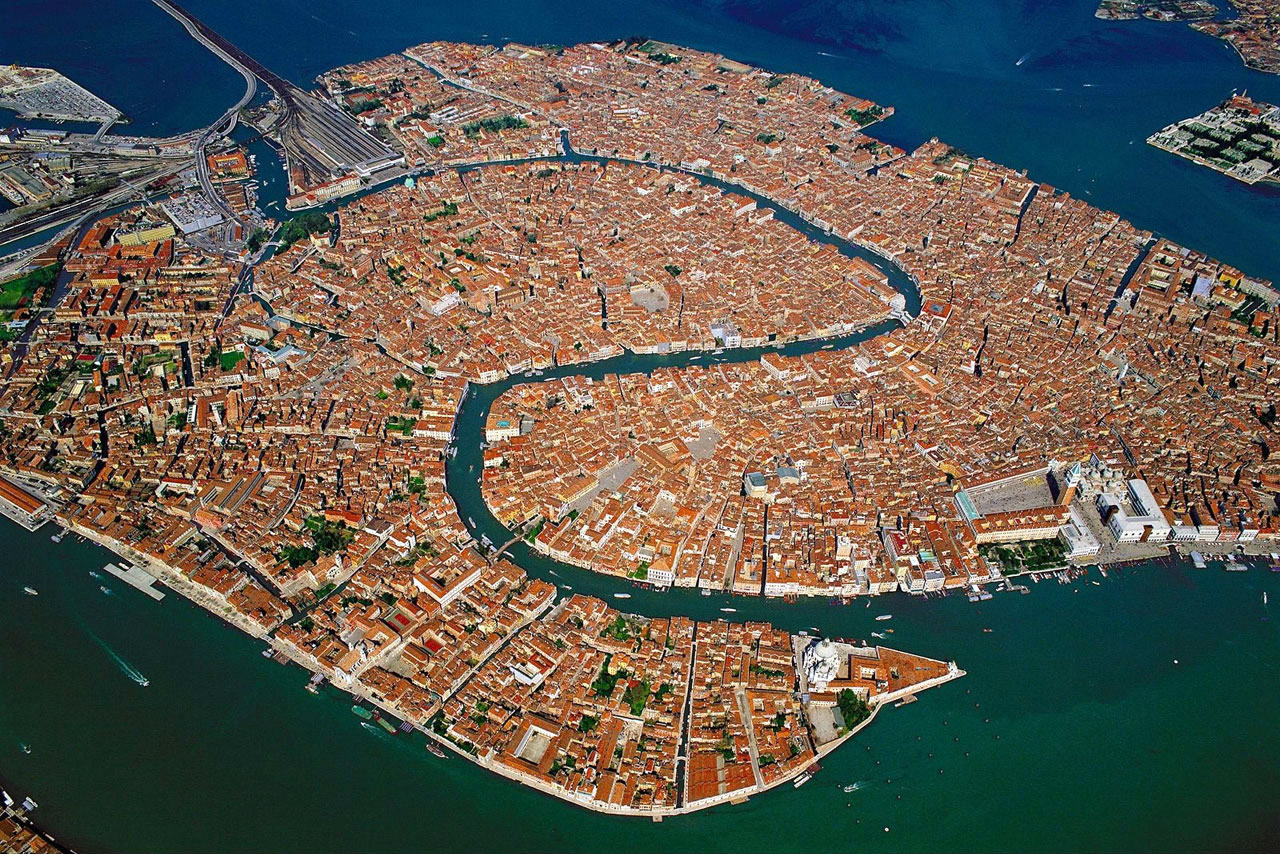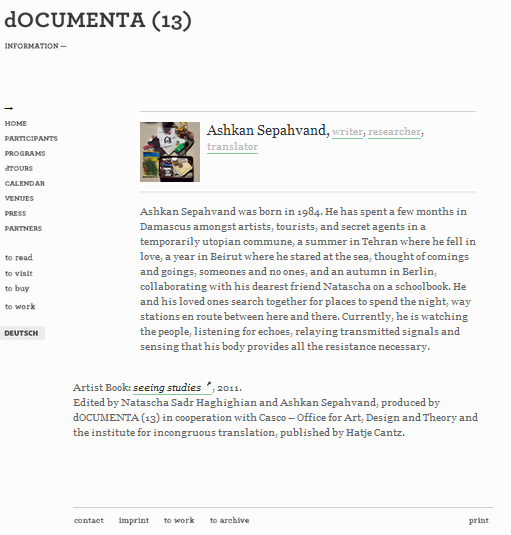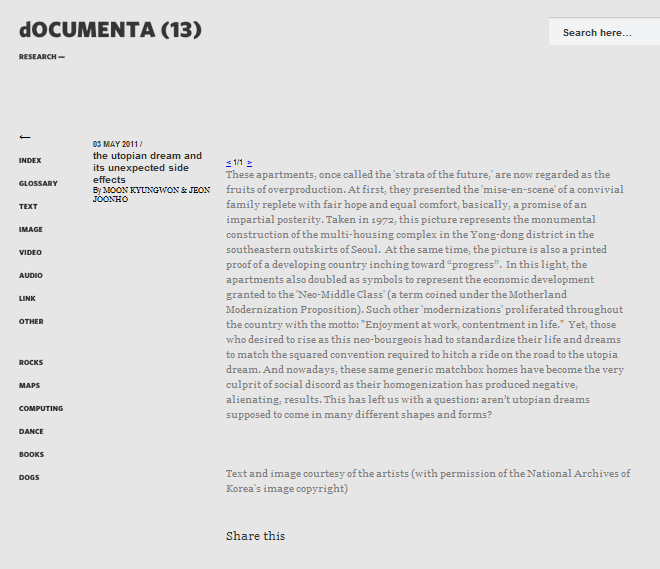2. La Utopía populista contemporánea y la “revolución” comunitaria anglosajona
"The coming of Christ will be instantaneous and worldwide. "For as the lightning comes from the east and flashes to the west, so also will the coming of the Son of Man be." Matthew 24:27
"In this we have the true antidote for the temporary unequal
distribution of wealth, the reconciliation of the rich and the poor-a reign of harmony."
Andrew Carnegie. The Gospel of Wealth.1889
distribution of wealth, the reconciliation of the rich and the poor-a reign of harmony."
Andrew Carnegie. The Gospel of Wealth.1889
"Social-control ideology is deeply embedded in these more general predictions, fantasies, visions and expectations" Stanley Cohen. Imagining Surveillance: Utopian Visions and Surveillance Studies. 1985
La Utopía hace parte de la naturaleza social humana, calcula el actor ideológico. ¿Quién que se considere humano podría rechazar nuestro proyecto revolucionario utópico sin ser considerado un descastado y un reaccionario? La difusión de la ideología y el mercado de lo utópico están perfectamente blindados bajo la moralidad de que la utopía es un producto de la bondad humana. Es por eso que los regímenes dictatoriales tanto fascistas como comunistas han podido secuestrarla con tanta facilidad y han podido castigar a sus contradictores con la total aprobación de la colectividad. Pero también en la democracia de libre mercado la Utopía es la construcción ideológica más seductora para dotar de una válvula de escape a la presión sobre las clases bajas y minimizar la violencia. El pensamiento popular bajo el entrenamiento de la ideología se vuelve radicalmente utopista y la utopía una cruzada “revolucionaria.”
El populismo – la búsqueda de la perpetuación reaccionaria de un sistema acudiendo al lenguaje revolucionario y la estética - es el secuestro de las ideas positivas colectivas por una élite y es por eso que la primera institución que instaura el pensamiento utópico es la de la vigilancia. Las ideas positivas colectivas son transformadas por el populismo en religión y en arte y son el pretexto perfecto para llevar a cabo una campaña cívica de administración minuciosa de la felicidad, casa por casa, metro a metro. Si el cuestionamiento de lo utópico se castiga en los regímenes totalitarios con el campo de concentración o el fusilamiento, en el Capitalismo del Laissez Faire se castiga con el aislamiento social. De ahí la ironía de Hawthorne sobre la Utopía puritana en Nueva Inglaterra - la Ciudad en la Colina ( The City on a Hill) en nombre de la cual se lleva a cabo la bíblica matanza del los "canaananitas" Pequot en 1637 - que lo primero que funda es una cárcel y un cementerio:
"The founders of a new colony, whatever Utopia of human virtue and happiness they might originally project, have invariably recognized it among their earliest practical necessities to allot a portion of the virgin soil as a cemetery, and another portion as the site of a prison." NATHANIEL HAWTHORNE, The Scarlet Letter.1852
La diferencia básica entre los sistemas totalitarios y el Capitalismo de Laissez Faire es la proporción represión /ideología. Si en aquellos la represión pesa más en la balanza, en los sistemas democráticos de libre mercado el control colectivo que se logra a través de la ideología - es decir la educación y el manejo de la cultura y el arte por los dueños de la propiedad, del mercado y de la fuerza de trabajo de sus súbditos - es la parte más pesada en la balanza.
Así pues, no es casualidad que el capitalismo salvaje victoriano haya producido una gran cantidad de literatura utópica y que la contemporaneidad vaya por el mismo camino (12). La Utopía de William Morris que le es introducida a éste en un sueño en el que ricos y pobres viven en armonía habiendo aceptado mutuamente que la solución a sus conflictos debe ser caballeresca, armónica y agonística - es decir artística - parece estarse introduciendo en el sueño de todos los actores artísticos que luchan por un puesto en la élite ideológica de la contemporaeneidad.
Es por esa misma razón que la utopía contemporánea se presenta como la “solución natural” al salvajismo del Laissez Faire. Su isla utópica se llama "We Can Live Together". La Utopía Idiorrítmica de Barthes (13) es llevada aquí a un nivel febril y es hoy la categoría básica ideológica del Arte Contemporáneo impulsado por el aparato ideológico neoliberal. Crear utopías turísticas desechables de un mes es lo que caracteriza la mecánica de la realidad de las Bienales que se relevan una a otra - inocuas políticamente - durante el año solar.
New Harmony. La comunidad ideal de Robert Owen en Indiana en 1825.
En ésta isla, la fricción de clases puede ser reducida hasta su mínima expresión: el ´disenso´ entre caballeros mediante la adopción por ambas partes de un "Código de no Agresión" del cual la cultura es el lubricante. El Multiculturalismo y la "Revolución Utópica Comunitaria " de la "conciencia poscolonial" creadas por el aparato ideológico anglosajón para hacerle creer a la periferia que tiene poder de decisión - con todos los diferentes vestidos con los que cada cierto tiempo se renueva, Altermodernismo, Teoría Decolonial, Geoestética y Retórica del No-Borde - se presentan como una “conquista política para las masas” y no la manera como el capitalismo aceita los engranajes discordantes de sus propias contradicciones funcionales mediante el arte a través de la creación de la Bienal y el evento artístico como una Utopía Holográfica construida en medio de la desesperación de la que habla Frederic Jameson :
“An act of compensation which ends up producing a whole new Utopian realm of the senses, or at least of that supreme sense-sight, the visual, the eye-which it now reconstitutes for us as a semiautonomous space in its own right, a part of some new division of labor in the body of capital, some new fragmentation of the emergent sensorium which replicates the specializations and divisions of capitalist life at the same time that it seeks in precisely such fragmentation a desperate Utopian compensation for them." Frederic Jameson. The Cultural Logic of Late Capitalism
La recompensa material que recibe el agente ideológico, el académico, el artista y el curador "políticos" - los dealers encargados de distribuir ideología en las calles de la cultura - siendo mucha, es poca para el papel vital que cumplen como agentes inoculadores de la "Ética caballeresco-comunitaria" del Laissez Faire corporativo. El problema de la Ideología como conciencia social e instrumento de análisis del funcionamiento del Capital yace hoy cómodamente enterrado y encima de su tumba ha sido replantada la Política filantropizada, infantilizada, primaveral y danzante - no solo de la "conciencia social" naïf de Carlyle, Ruskin y Morris y la era victoriana - sino la de la larga tradición utópica de las sectas puritanas no conformistas del siglo XVII en que se inspiraron las utopías victorianas y en las que se inspira la propaganda ideológica de la Utopía capitalista del Laissez Faire Corporativo contemporáneo en forma de arte.
Vivimos regidos por una élite que "cuestiona" inofensivamente el mundo negando el papel de la Ideología. Una élite cultural que creció yendo a la escuela de la lobotomización total de la política por el posmodernismo y los sepultureros de la Ideología y solo introdujo en la filantropía anglosajona un lenguaje beligerante vagamente leninista para poderla llamar “política”. (15)
Jamás - y esa es la idea de quienes controlan la polinización ideológica - ésta élite partisana y “ultra- revolucionaria” va a ir más allá de donde el poder que la ha educado y moldeado a placer en la Academia "crítica" anglosajona dominada por la Ideología de la Corporación, quiere que vaya. Son sus mensajeros, la voz de sus espejismos. Gritan como Lenin pero son obedientes como el más inofensivo de los Leporellos. Son inoculadores - resucitando para la cultura contemporánea y la administración corporativa de la sociedad el atavismo separatista puritano anglosajón del siglo XVII - de la idea de que la “revolución” debe ser comunitaria, étnica, tribal, cultural y de género (16) y no de clase. O que el mejoramiento del capitalismo comienza por el cambio de los hábitos espiritules personales y la revelación del ser interior religioso/cívico del individuo desclasado. Para el artista político, la sociedad capitalista se se cambia puerta por puerta, bienal por bienal, feria por feria, seminario por seminario, tour por tour, corazón por corazón. Dinámica que básicamente - aparte del flujo de corriente constante que alimenta el sistema nervioso de la ideología del poder - lo que crea es una corriente interminable de mercado y liquidez (17.)
El cambio social nace del cambio de los códigos culturales y el uso de la semiótica en la mente del espectador por medio de la obra de arte y la propaganda cultural y no en el cambio en las relaciones de producción mediante la lucha económica y, ahí si, política (18). Son básicamente propagadores de la idea vernácula y central del manejo del conflicto social anglosajon desde el siglo XVII, así se adornen con la boina estrellada, el puño en alto y sobre todo el verbo heroico que nos hace delirar con que la revolución escatológica está a la vuelta de la esquina, es inminente y solo hace falta que se le deje su urgente administración y su mercado, al pool contratista de la intelligentsia artística. Un espectáculo que no podría tener más satisfecho al poder que lo promueve para distraer a las masas y que las embebe en el delirio de un domingo eterno mientras lo dejan - laissez faire - hacer lo que quiera sin la intervención de nadie. Capitalismo salvaje y la utopía social en manos de los artistas es una ecuación que siempre funcionó a la perfección. Ayer como hoy forman un equipo indisoluble que además, representa uno de los negocios más rentables y antiguos de la historia de la ideología cual es el de vender sueños con la promesa de su realización parouisística (18) "urgente, inminente e irreversible."
----------------------------------------
NOTAS
(12)Although they date to the earliest days of U.S. history, Utopian communities, intentional communities created to perfect American society, had become institutionalized in American thought by the 1840s. Various groups, struggling under the pressures of urbanization and industrialization, challenged the traditional norms and social conservatism of American society. Their desire to create a perfect world often lay in sharp contradiction to the world in which they lived, one in which capitalism, the Industrial Revolution, immigration, and the tension between the individual and the community challenged older forms of living.
The first American Utopias grew out of Robert Owen's attempt to create a model company town in New Lanark, Scotland. In the United States, Owen organized the New Harmony Community along the Wabash River in western Indiana in 1825. There the residents established a socialist community in which everyone was to share equally in labor and profit. Just months after the creation of a constitution in January 1826, the thousand residents at New Harmony divided into sub-communities that then disintegrated into chaos. In 1825 Francis Wright established another Owenite community at Nashoba in Tennessee. Wright had hoped to demonstrate that free labor was more economical than slavery, but Nashoba attracted few settlers, and the community closed its doors within a year.
http://www.answers.com/topic/utopian-communities#ixzz1kL3sBZE6
http://www.answers.com/topic/utopian-communities#ixzz1kL3sBZE6
Yet beside such works we need to recall that there were of course a notable number of pro-socialist British utopias set in this period, besides Morris’s News fr om Nowhere. John Petzler’s Life in Utopia (1890) is an extraordinarily elaborate detailing of the reordering of every aspect of life in the ideal future. A similar eff ort is William Thomson’s A Prospectus of Socialism; or, A Glimpse of the Millenium (1894), in which Britain is reorganized into 139 cities each containing 18 communal ‘palaces’, the details of life in which are explored even to the crucial household issue of who washes the dishes. Frederick W. Hayes’s The Great Revolution of 1905; or, The Story of the Phalanx (1893)14 describes a successful revolution which introduces a system of ‘State Industrialism’ to promote national welfare and abolish idleness. Such an increase of social efficiency is characteristic of such works. Indeed, socialist utopias are if anything considerably harsher on idleness than were contemporary social theorists generally, and to some will appear dystopian as a consequence. In 1891, Percy Clarke’s Th e Valley Council; or, Leaves fr om the Journal of Th omas Bateman of Canbelego Station, N.S.W. (1891), for instance, those who have not found gainful employment by the age of thirty are put to death. Similarly in Etymonia (1875), we are told that Allowance is made for everything, excepting mere idleness, and for this the remedy isstern … If a man does not create what we will call his economic counterpoise, he must starve in Etymonia. If he is inclined to rebel, and to satisfy his wants by appropriating, or by plucking from out the fields, the wherewith to content his hunger, then he is regarded as having taken that for which he has given no equivalent. To violence is opposed violence; to licence, restraint. Such a one would be confi ned to a strong room, where he would be supplied with work.
Late Victorian Utopias:A Prospectus. Editor: Gregory Claeys. 2008
(13) In the last session of Comment vivre ensemble, Barthes specified that his utopia of the idiorrhythmic living-together was not a social one. Unlike other Utopian thinkers (from Plato to Fourier), he was not proposing "an ideal way to organize power." What attracted him was what he called a "domestic" utopia, aiming at insuring a good relation between subject and affect, between subject and symbol. This "domestic" utopia was built around micro-spaces that resist the power of social discourse, similar to the seminars he held at the Ecole Pratiques des Hautes Etudes en Sciences Sociales. http://findarticles.com/p/articles/mi_hb124/is_201101/ai_n57973789/pg_7/?tag=untagged
The Biennial’s concept "Como viver junto" (How to Live Together) was inspired by Roland Barthes lecture series "Comment vivre ensemble", which he presented at the Collège de France in 1967-77. An ethical definition of Living Together shall be searched through the conceptual emphasis of the construction of shared spaces, the questioning of coexistence, differences, rhythms of production and cooperative practices. 27th São Paulo Biennial 7 October - 17 December 2006
(13)"An act of compensation which ends up producing a whole new Utopian realm of the senses, or at least of that supreme sense-sight, the visual, the eye-which it now reconstitutes for us as a semi autonomous space in its own right, a part of some new division of labor in the body of capital, some new fragmentation of the emergent sensorium which replicates the specializations and divisions of capitalist life at the same time that it seeks in precisely such fragmentation a desperate Utopian compensation for them." Frederic Jameson. The Cultural Logic of Late Capitalism
(14) "En principio, las condiciones económicas habían transformado la masa del país en trabajadores. La dominación del capital ha creado en esta masa una situación común, intereses comunes. Así, esta masa viene a ser ya una clase frente al capital, pero todavía no para sí misma. En la lucha, de la cual hemos señalado algunas fases, esta masa se reúne, constituyéndose en clase para sí misma. Los intereses que defienden llegan a ser intereses de clase". Marx. Miseria de la Filosofía. 1847
(15) La ausencia del Mainstream del Arte Contemporáneo en los "Occupies" europeos y en Wall Street deja ver en la práctica de que lado está el Arte Contemporáneo. La ausencia de su "anticapitalismo" y su "disenso" en tales acontecimientos, demuestran que su retórica (clase para si) va por un lado, y su práctica y su decisión final de clase (clase en sí) por otro. No está de más recordar las palabras de Trotsky respecto a la naturaleza de clase del artista:
"Están inevitablemente influenciados por ideologías opuestas e impulsos tanto de izquierda como de derecha, con una gran preponderancia de la derecha sobre la izquierda".
El artista contemporáneo ha finalmente reconocido que se debe al Laissez Faire corporativo y que debe tratar de quedar con el 1% de la sociedad o sucumbir. Su beligerancia "anticapitalista" yace en éstos dias en el silencio y es posible que después de su decisión de no unirse a los Occupies populares y esconderse, no tenga ya más autoridad para volver a "desobedecer" ni siquiera en el espacio de la Bienal y Cubo Blanco. Ha tenido entonces que ajustar su táctica de asalto al capitalismo y ha visto que resulta más conveniente por ahora encaminarse dócil, con el corazón pleno de amor y abrazos misionarios para todos - qué ironía - hacia la isla de Utopía, la categoría primaria de la Modernidad que el Arte Contemporáneo daba por terminada.
Su arrogancia al hablar de la Modernidad usando la figura retórica de la Occupatio (con lo que no estoy de acuerdo no existe) llega disimuladamente a las playas de la isla de la Modernidad Utópica. En Isla de Citerea florece como una epidemia el arte que tanto detesta: el arte irresponsable , el arte por el arte y el arte por el placer, el bodegón de Cézanne, el paisaje Ming y el arte que entendió miles de años antes que los recien llegados - desplazados del posmodernismo - que la naturaleza intrínseca de la mayor parte del Arte es la Utopía, no para embromar a la sociedad con agendas filisteas, sino en su propio, intrínseco y efimero momento de contemplación del universo. Desde el espacio utópico de las cavernas donde el hombre crea un espacio donde la caza no se agota, hasta la utopía abstracta de Barnett Newman donde cada individuo encuentra la propia escala de su Ser en el Ser universal. La incultura política impide convenientemente predecir que si el artista quiere cambiar la sociedad no debe abandonar la Utopía del cuadro sino que debe acercarse más a la calle de Courbet o Siqueiros que al club social "politizado" de Beuys a la luz del cual la noción del "Artista Tate" y del revolucionario de Bienal han derivado en una vulgarización del activismo en el mercado de lo Sublime haciendo del activismo solo una forma de arribismo social y religión del ego.
Watteau. Embarque a la Isla de Citerea. c. 1721
Al desembarcar en Citerea y tratar de ocuparla, robarla y expropiarla para el Laissez Faire, el Arte Contemporáneo anti-moderno se encuentra agarrándose con desesperación a las boyas de la Modernidad. Se encuentra con Watteau cuya expedición llegó primero; con la "Et in Arcadia Ego" de Poussin, la Bacanal de Tiziano y la "Grénouillere" de Renoir dónde el arte es solo armonía colectiva, equilibrio social, y belleza de maneras. Es una Utopía galante que ya está ocupada y recuerda los insultos de los artistas "politizados" jugando al tiro al blanco con el “Embarque a Citerea” durante el reinado de Jaques Louis David.
(16)
a.
Separatist, also called Independent, any of the English Christians in the 16th and 17th centuries who wished to separate from the Church of England and form independent local churches. They were eventually called Congregationalists. Separatists were most influential politically in England during the time of the Commonwealth (1649–60) under Oliver Cromwell, the lord protector, who was himself a Separatist. Subsequently, they survived repression and gradually became an important religious minority in England.One group of Separatists left England for Holland in 1608, and in 1620 some of them, the Pilgrims, settled at Plymouth, Massachusetts. The Plymouth Separatists cooperated with the Puritans (nonseparating Independents) who settled Massachusetts Bay (1630). Encyclopedia Britannica on Line. http://www.britannica.com/EBchecked/topic/285064/Separatist
Separatist, also called Independent, any of the English Christians in the 16th and 17th centuries who wished to separate from the Church of England and form independent local churches. They were eventually called Congregationalists. Separatists were most influential politically in England during the time of the Commonwealth (1649–60) under Oliver Cromwell, the lord protector, who was himself a Separatist. Subsequently, they survived repression and gradually became an important religious minority in England.One group of Separatists left England for Holland in 1608, and in 1620 some of them, the Pilgrims, settled at Plymouth, Massachusetts. The Plymouth Separatists cooperated with the Puritans (nonseparating Independents) who settled Massachusetts Bay (1630). Encyclopedia Britannica on Line. http://www.britannica.com/EBchecked/topic/285064/Separatist
b.
"For him (Robert Browne), in the covenant promise of the local congregation the eternal covenant of grace became
contemporary and man's acceptance of it was actualized in history."
"For him (Robert Browne), in the covenant promise of the local congregation the eternal covenant of grace became
contemporary and man's acceptance of it was actualized in history."
"Many of the questions. . . raised among the sectaries of the Great Rebellion were" those "posed by the English Separatists." More than this, the Separatists' churchmanship, "powerful and flexible as it was, provided
the characteristic organization ... of much of New England Protestantism and, ultimately, that of the United States."
the characteristic organization ... of much of New England Protestantism and, ultimately, that of the United States."
"In the covenant promise of the local congregation the eternal covenant of grace became
contemporary and man's acceptance of it was actualized in history" John Fawcett. 1797
contemporary and man's acceptance of it was actualized in history" John Fawcett. 1797
B.R. White. The English Separatist Tradition: from the Marian Martyrs to the Pilgrim Fathers.London: Oxford University Press, 1971.
(17) “As much as the other Transcendentalists approved Ripley’s vision of heaven on earth, they differed as to whether human progress was best made through individuals or in community. After much soul searching, individualists Ralph Waldo Emerson and Margaret Fuller declined to join the community. While they gave moral support to Brook Farm, they believed that society was best transformed one heart at a time.” Aaron McEmrys. Dictionary of Unitarian & Universalist Biography.
(18) "Build, therefore, your own world. As fast as you conform your life to the pure idea in your mind, that will unfold its great proportions. A correspondent revolution in things will attend the influx of the spirit. So fast will disagreeable appearances, swine, spiders, snakes, pests, madhouses, prisons, enemies, vanish; they are temporary and shall be no more seen. The sordor and filths of nature, the sun shall dry up, and the wind exhale. As when the summer comes from the south; the snow-banks melt, and the face of the earth becomes green before it, so shall the advancing spirit create its ornaments along its path, and carry with it the beauty it visits, and the song which enchants it; it shall draw beautiful faces, warm hearts, wise discourse, and heroic acts, around its way, until evil is no more seen. The kingdom of man over nature, which cometh not with observation, -- a dominion such as now is beyond his dream of God, -- he shall enter without more wonder than the blind man feels who is gradually restored to perfect sight." Emerson. Nature. Chapter VII. Prospects. 1836
"As much as the other Transcendentalists approved Ripley's vision of heaven on earth, they differed as to whether human progress was best made through individuals or in community. After much soul searching, individualists Ralph Waldo Emerson and Margaret Fuller declined to join the community. While they gave moral support to Brook Farm, they believed that society was best transformed one heart at a time." Aaron McEmrys. Dictionary of Unitarian & Universalist Biography.
(18) La fraseología parousística (de Parousía, παρουσία, aparición relacionada con la segunda venida de Cristo) del arte político contemporáneo pone en evidencia desde luego, su proveniencia neotestamental protestante. Este estilo neotestamental parousistico del entusiasmo protestante es un leitmotiv desde Jonathan Edwards hasta hoy. En Emerson, desde Harvard, se adoba con el lenguage de Fichte y Schelling para hecerla más "intelectual" y "alemana" y el sermón toma la forma del ensayo y el tratado filosófico típicos del diletantismo intelectual del Unitarianismo:
"When the Hollis Professor of Divinity David Tappan died in 1803 and the president of Harvard Joseph Willard died a year later, in 1804, the overseer of the college Jedidiah Morse demanded that orthodox men be elected. This angered the liberals with Unitarian leanings. After much struggle the Unitarian Henry Ware was elected. This signaled a shift as Harvard Divinity drifted from orthodox Calvinist conservative roots towards liberalism and Unitarianism. Jedidiah Morse went on to found the Andover Theological Seminary as an orthodox alternative to the Harvard Divinity School. Harvard Divinity was very much a Unitarian school even before Unitarianism was defined. Harvard Divinity school became a national training ground and hub for Unitarian ministers. Some orthodox and evangelical critics called this "The Unitarian takeover of Harvard." Harvard Divinity School and Unitarianism. http://en.wikipedia.org/wiki/Harvard_Divinity_School
Whitman la "homeriza." Sandburg la moderniza, Ginsberg y los Beat la contraculturizan y el posmodernismo la corporativiza. Desde el Siglo XVII hasta hoy, la fraseología parousística ha determinado de forma categórica el estilo literario del arte "comprometido" y la retórica politica norteamericanos. El arte político simplemente realiza una transferencia - muy similar a la del Unitarianismo - de la idea de "Great Awakening" hacia la idea de "cambio social" o cualquiera de sus eufemismos donde el arte es la luz del despertar mesiánico:
"The coming of Christ will be instantaneous and worldwide. "For as the lightning comes from the east and flashes to the west, so also will the coming of the Son of Man be." —Matthew 24:27
The coming of Christ will be visible to all. "Then the sign of the Son of Man will appear in heaven, and then all the tribes of the earth will mourn, and they will see the Son of Man coming on the clouds of heaven with power and great glory." —Matthew 24:30
The coming of Christ will be audible. "And He will send His angels with a great sound of a trumpet, and they will gather together His elect from the four winds, from one end of heaven to the other." —Matthew 24:31
The resurrection of the righteous will occur. "For the Lord Himself will descend from heaven with a shout, with the voice of the archangel, and with the trumpet of God. And the dead in Christ will rise first." —1 Thessalonians 4:16
In one single event, the saved who are alive at Christ's coming will be caught up together with the resurrected to meet the Lord in the air. "Then we who are alive and remain shall be caught up together with them in the clouds to meet the Lord in the air. And thus we shall always be with the Lord." —1 Thessalonians 4:17"
The coming of Christ will be visible to all. "Then the sign of the Son of Man will appear in heaven, and then all the tribes of the earth will mourn, and they will see the Son of Man coming on the clouds of heaven with power and great glory." —Matthew 24:30
The coming of Christ will be audible. "And He will send His angels with a great sound of a trumpet, and they will gather together His elect from the four winds, from one end of heaven to the other." —Matthew 24:31
The resurrection of the righteous will occur. "For the Lord Himself will descend from heaven with a shout, with the voice of the archangel, and with the trumpet of God. And the dead in Christ will rise first." —1 Thessalonians 4:16
In one single event, the saved who are alive at Christ's coming will be caught up together with the resurrected to meet the Lord in the air. "Then we who are alive and remain shall be caught up together with them in the clouds to meet the Lord in the air. And thus we shall always be with the Lord." —1 Thessalonians 4:17"
"The human mind cannot be enshrined in a person, who shall set a barrier on any one side to this unbounded, unboundable empire. It is one central fire, which, flaming now out of the lips of Etna, lightens the capes of Sicily; and, now out of the throat of Vesuvius, illuminates the towers and vineyards of Naples. It is one light which beams out of a thousand stars. It is one soul which animates all men." Emerson. The American Scholar. 1837
"Though persuaded that Scripture does not allow the calculation of the exact date of the Parousia, Edwards was insist tent that it did indicate the general period. The fullest development of this is in an unpublished sermon on John 1:10.22 The application is especially interesting. The prophecies make us believe, said Edwards in 1741, that the coming of Christ is not far distant. Furthermore, there is reason to believe that Christ’s reception, or lack of it, at the Second Coming will parallel his first coming." The LatterDay Glory and Second Coming: from Jonathan Edwards: A Mini-Theology by John H. Gerstner. Grace Online Library Historic Baptist, Reformed & Puritan Resources.
-----------------------------------------------------
La Isla de Utopía Anglosajona. Un apéndice.
I must freely own that as long as there is any property, and while money is the standard of all other things, I cannot think that a nation can be governed either justly or happily: not justly, because the best things will fall to the share of the worst men; nor happily, because all things will be divided among a few (and even these are not in all respects happy), the rest being left to be absolutely miserable. Therefore, when I reflect on the wise and good constitution of the Utopians, among whom all things are so well governed and with so few laws, where virtue hath its due reward, and yet there is such an equality that every man lives in plenty.
Thomas More. Utopia. Discourses of Raphael Hythloday. OF THE BEST STATE OF A COMMONWEALTH. 1516
In 1772 Ann (Standerin) received a vision from God in which she was told that "a place had been prepared" for them in America. A small band of nine believers emigrated to America in1774 and founded the United Society of Believers in Christ's Second Appearing. They lived in New York until they could raise enough money to buy a tract of wilderness for themselves in Western New York State, which they called Niskeyuna. Here they built the first Shaker community in America. In numerous visions Mother Ann formulated a basic philosophy for the group - in one vision it was explained to her that sex was the root of all sin, and that to truly serve God, one must be celibate. She came to believe that God was bisexual because both man and woman were made in his image, and that this was duplicated throughout nature. Every living thing, animal or vegetable, had both a male and female component. She herself was seen to be the female component of Christ's spirit representing the second appearance of Christ on earth. This lead to the belief that all people were equal regardless of sex or race. [...]In 1999 there remained one Shaker community at Sabbathday Lake with only 10 members. Mother Ann, before her death, had a vision that the Shakers would be renewed once they had dropped to five members.
Utopia Britannica - British Utopian Experiments 1325 - 1945. The Shaking Quakers
The Code of the Guild of St. George. Ruskin
I trust in the Living God, Father Almighty, Maker of heaven and earth, and of all things and creatures visible and invisible.I trust in the kindness of His law, and the goodness of His work. And I will strive to love Him, and keep His law, and see His work, while I live.
I trust in the nobleness of human nature, in the majesty of its faculties, the fulness of its mercy, and the joy of its love.And I will strive to love my neighbour as myself, and, even when I cannot, will act as if I did.
I will labour, with such strength and opportunity as God gives me, for my own daily bread; and all that my hand finds to do, I will do with my might.
I will not deceive, or cause to be deceived, any human being for my gain or pleasure; nor hurt, or cause to be hurt, any human being for my gain or pleasure; nor rob, or cause to be robbed, any human being for my gain or pleasure.
I will not kill nor hurt any living creature needlessly, nor destroy any beautiful thing, but will strive to save and comfort all gentle life, and guard and perfect all natural beauty, upon the earth.
I will strive to raise my own body and soul daily into higher powers of duty and happiness; not in rivalship or contention with others, but for the help, delight, and honour of others, and for the joy and peace of my own life.
I will obey all the laws of my country faithfully; and the orders of its monarch, and of all persons appointed to be in authority under its monarch, so far as such laws or commands are consistent with what I suppose to be the law of God; and when they are not, or seem in any wise to need change, I will oppose them loyally and deliberately, not with malicious, concealed, or disorderly violence.
And with the same faithfulness, and under the limits of the same obedience, which I render to the laws of my country, and the commands of its rulers, I will obey the laws of the Society called of St. George, into which I am this day received; and the orders of its masters, and of all persons appointed to be in authority under its masters, so long as I remain a Companion, called of St. George. John Ruskin Fors Clavigera, Letter 58
I trust in the nobleness of human nature, in the majesty of its faculties, the fulness of its mercy, and the joy of its love.And I will strive to love my neighbour as myself, and, even when I cannot, will act as if I did.
I will labour, with such strength and opportunity as God gives me, for my own daily bread; and all that my hand finds to do, I will do with my might.
I will not deceive, or cause to be deceived, any human being for my gain or pleasure; nor hurt, or cause to be hurt, any human being for my gain or pleasure; nor rob, or cause to be robbed, any human being for my gain or pleasure.
I will not kill nor hurt any living creature needlessly, nor destroy any beautiful thing, but will strive to save and comfort all gentle life, and guard and perfect all natural beauty, upon the earth.
I will strive to raise my own body and soul daily into higher powers of duty and happiness; not in rivalship or contention with others, but for the help, delight, and honour of others, and for the joy and peace of my own life.
I will obey all the laws of my country faithfully; and the orders of its monarch, and of all persons appointed to be in authority under its monarch, so far as such laws or commands are consistent with what I suppose to be the law of God; and when they are not, or seem in any wise to need change, I will oppose them loyally and deliberately, not with malicious, concealed, or disorderly violence.
And with the same faithfulness, and under the limits of the same obedience, which I render to the laws of my country, and the commands of its rulers, I will obey the laws of the Society called of St. George, into which I am this day received; and the orders of its masters, and of all persons appointed to be in authority under its masters, so long as I remain a Companion, called of St. George. John Ruskin Fors Clavigera, Letter 58
Ruskin sketched out the framework for his own utopian world. It was a world where art and life were to merge as one. Money itself would be an object of beauty. Each trade and profession was to have its own distinctive costume. Work would be carried out by hand, without machines with their accompanying pollution. The mainly agricultural work would be interspersed with folk festivals.
Ruskin conceived the Guild of St. George as a means of transforming the declining state of Britain into his utopian fantasy. "We will try to take some small piece of English ground, beautiful, peaceful and fruitful. We will have no steam-engines upon it, and no railroads; we will have no untended or unthought-of creatures on it; none wretched, but the sick; none idle, but the dead." The Guild was to be a band of men of good will, giving a tithe of their income, and the best of their energies, to acquiring land, and developing it, in accordance with Ruskin's ideas and ideals.
The Brook Farm Institute of Agriculture and Education
Brook Farm, formally The Brook Farm Institute of Agriculture and Education, short-lived utopian experiment in communal living (1841–47). The 175-acre farm was located in West Roxbury, Mass. (now in Boston). It was organized and virtually directed by George Ripley, a former Unitarian minister, editor of The Dial (a critical literary monthly), and a leader in the Transcendental Club, an informal gathering of intellectuals of the Boston area. He was aided by his wife, Sophia Dana Ripley, a woman of wide culture and academic experience.
According to the articles of agreement, Brook Farm was to combine the thinker and the worker, to guarantee the greatest mental freedom, and to prepare a society of liberal, cultivated persons, whose relations with each other would permit a more wholesome and simpler life than could be led amid the pressure of competitive institutions.
The project was financed by the sale of stock, a purchaser of one share automatically becoming a member of the institute, which was governed by a board of directors. The profits, if any, were divided into a number of shares corresponding to the total number of man-days of labour, every member entitled to one share for each day’s labour performed. Among the original shareholders were journalist Charles A. Dana and author Nathaniel Hawthorne, who served together as the first directors of agriculture. Ralph Waldo Emerson, Bronson Alcott, Margaret Fuller, Elizabeth Peabody, Theodore Parker, and Orestes A. Brownson were among its interested visitors.
Brook Farm attracted not only intellectuals—though teachers were always in preponderance among the 70 or 80 members—but farmers and craftsmen as well. It paid $1 a day for work (physical or mental) to men and women and provided housing, clothing, and food at approximately actual cost to all members and their dependents. For four years the commune published The Harbinger, a weekly magazine devoted to social and political problems, to which James Russell Lowell, John Greenleaf Whittier, and Horace Greeley occasionally contributed. http://www.britannica.com/EBchecked/topic/81179/Brook-Farm, http://www25.uua.org/uuhs/duub/articles/brookfarm.html
Summit of Micronations and Utopian thinkers
http://www.ykon.org/ykon/futuregame/ykon_futuregame_poster.pdf
Furthermore, one can see micronations and model states as hybrids which combine literary utopias, utopian communities and a spirit of adventure. In doing so, they interweave many threads of references, derived from everything from Campanella’s »Sonnnenstaat« to notorious Cyrus Reed Teed’s »Hollow Earth« community, from the myth of Atlantis to self-declared emperors like William Lyon Mackenzie and all the Robin Hoods of the world. And this is surely a good source of inspiration for our imagination.
From 29th to 31st of August the first »Summit of Micronations« will take place in Helsinki. What can we expect from this event? All of the essays in this publication contain a good deal of speculation concerning the phenomenon of micronations. I hope that most of it has to be revised after the summit. Are micronations »experiments in international law, politics, diplomacy and governance« as we have claimed? What is the common ground of secessionisti new country projects and transnational model-states? Is the establishment of borders out of step with an era when we should be focussing on developing cultural diversity in a »border-crossing« society? Are micronations a way to boost participatory democracy?
Oliver Kochta. A Summit of Micronations. Revised text from the »Journal for North-East Issues«, No.2 / 2003. Amorph´03 Micronations.
http://www.muu.fi/amorph03/texts/summit.html
Furthermore, one can see micronations and model states as hybrids which combine literary utopias, utopian communities and a spirit of adventure. In doing so, they interweave many threads of references, derived from everything from Campanella’s »Sonnnenstaat« to notorious Cyrus Reed Teed’s »Hollow Earth« community, from the myth of Atlantis to self-declared emperors like William Lyon Mackenzie and all the Robin Hoods of the world. And this is surely a good source of inspiration for our imagination.
From 29th to 31st of August the first »Summit of Micronations« will take place in Helsinki. What can we expect from this event? All of the essays in this publication contain a good deal of speculation concerning the phenomenon of micronations. I hope that most of it has to be revised after the summit. Are micronations »experiments in international law, politics, diplomacy and governance« as we have claimed? What is the common ground of secessionisti new country projects and transnational model-states? Is the establishment of borders out of step with an era when we should be focussing on developing cultural diversity in a »border-crossing« society? Are micronations a way to boost participatory democracy?
Oliver Kochta. A Summit of Micronations. Revised text from the »Journal for North-East Issues«, No.2 / 2003. Amorph´03 Micronations.
http://www.muu.fi/amorph03/texts/summit.html
Australia has a long history of utopian communities dating back into the 19th century. A large number of communities were established in the aftermath of the Aquarius festival - the Australian version of Woodstock - held in the rural area of Nimbin in 1973. Some of the festival-goers stayed in the area turning land-sharing fantasies into reality. While most of the post-Aquarius communities have disintegrated, the participants of "The making of Utopia" have managed to sustain a communal lifestyle for over 30 years and became role-models for similar experiments. The only exception is Equilibrium Inc. – a group of people just in the planning stage for setting up an intentional community near Sydney.
Kalleinen and Kochta-Kalleinen sent an open letter to the communities inviting them to join a workshop and write a fiction film about themselves. The main questions the artists posed to the communities related to the ongoing conflict between utopian vision and communal reality. The Making of Utopia 2006
by Tellervo Kalleinen and Oliver Kochta-Kalleinen
'PRACTICAL UTOPIAS'
http://www.ykon.org/tellervo/utopia.html
'PRACTICAL UTOPIAS'
http://www.ykon.org/tellervo/utopia.html
Practical Utopias is a multiannual project bringing together utopian communities, thinkers and activists engaged in radical forms of systemic critique and practice. Born out of the legacy of two previousSummits of Micronations,Practical Utopias expands on this category of self-
organisation in a third summit on the Croatian island of Brioni - President Tito's former summer residency. The summit, organized in collaboration with Drugo More, Croatia and YKON, Finland, will take place in the summer of 2013 following a series of events across Europe. Brionni Summit
http://www.electra-productions.com/
Alex Heard. Libertarian Paradiso. http://www.nytimes.com/1998/08/09/magazine/libertarian-paradiso.html?pagewanted=all&src=pm
ART & ALTERNATIVE POLITICS. Venice Biennial, Utopia Station, ”Love Difference” Section, September 13th, 2003
http://www.utnr.net/?p=230
organisation in a third summit on the Croatian island of Brioni - President Tito's former summer residency. The summit, organized in collaboration with Drugo More, Croatia and YKON, Finland, will take place in the summer of 2013 following a series of events across Europe. Brionni Summit
http://www.electra-productions.com/
Alex Heard. Libertarian Paradiso. http://www.nytimes.com/1998/08/09/magazine/libertarian-paradiso.html?pagewanted=all&src=pm
ART & ALTERNATIVE POLITICS. Venice Biennial, Utopia Station, ”Love Difference” Section, September 13th, 2003
http://www.utnr.net/?p=230
Still another alternative is offered by Zbigniew Brzezinski, who bases his futurist ideology on the trends of technology in the advanced countries of the world, especially the United States. He sees in the conscious application of technical-scientific rationality by an intellectual elite the method by which the promises of modern knowledge can be made good
George Kateb. Utopia. The Potential and Prospect of the Human Condition
http://www.bokkilden.no/SamboWeb/produkt.do?produktId=2929725
http://www.bokkilden.no/SamboWeb/produkt.do?produktId=2929725
DOCUMENTA 13.
Carlos Salazar
____
Los Contratistas de la Nueva Utopía (1)
http://esferapublica.org/nfblog/?p=21711
http://esferapublica.org/nfblog/?p=21711


